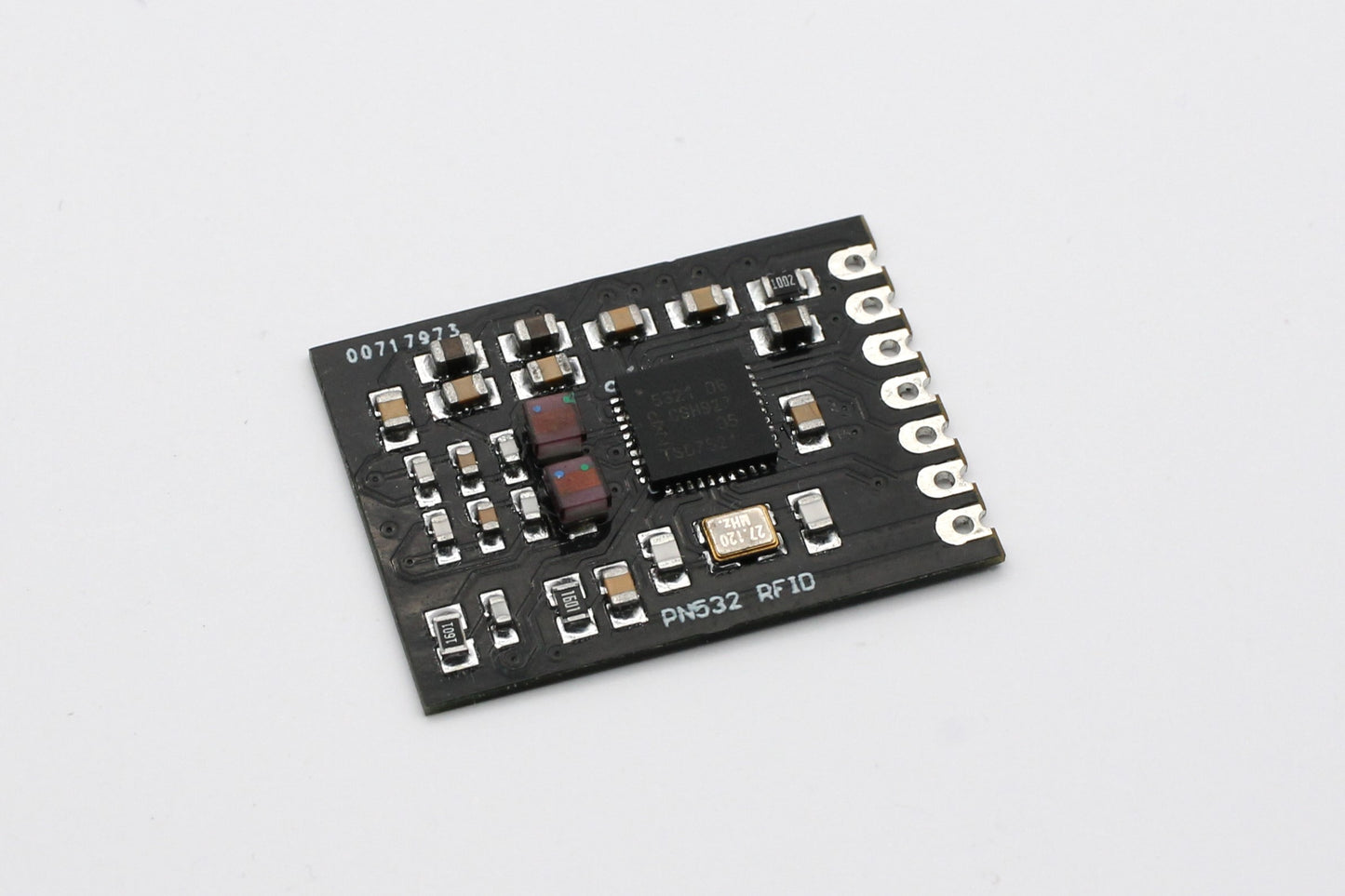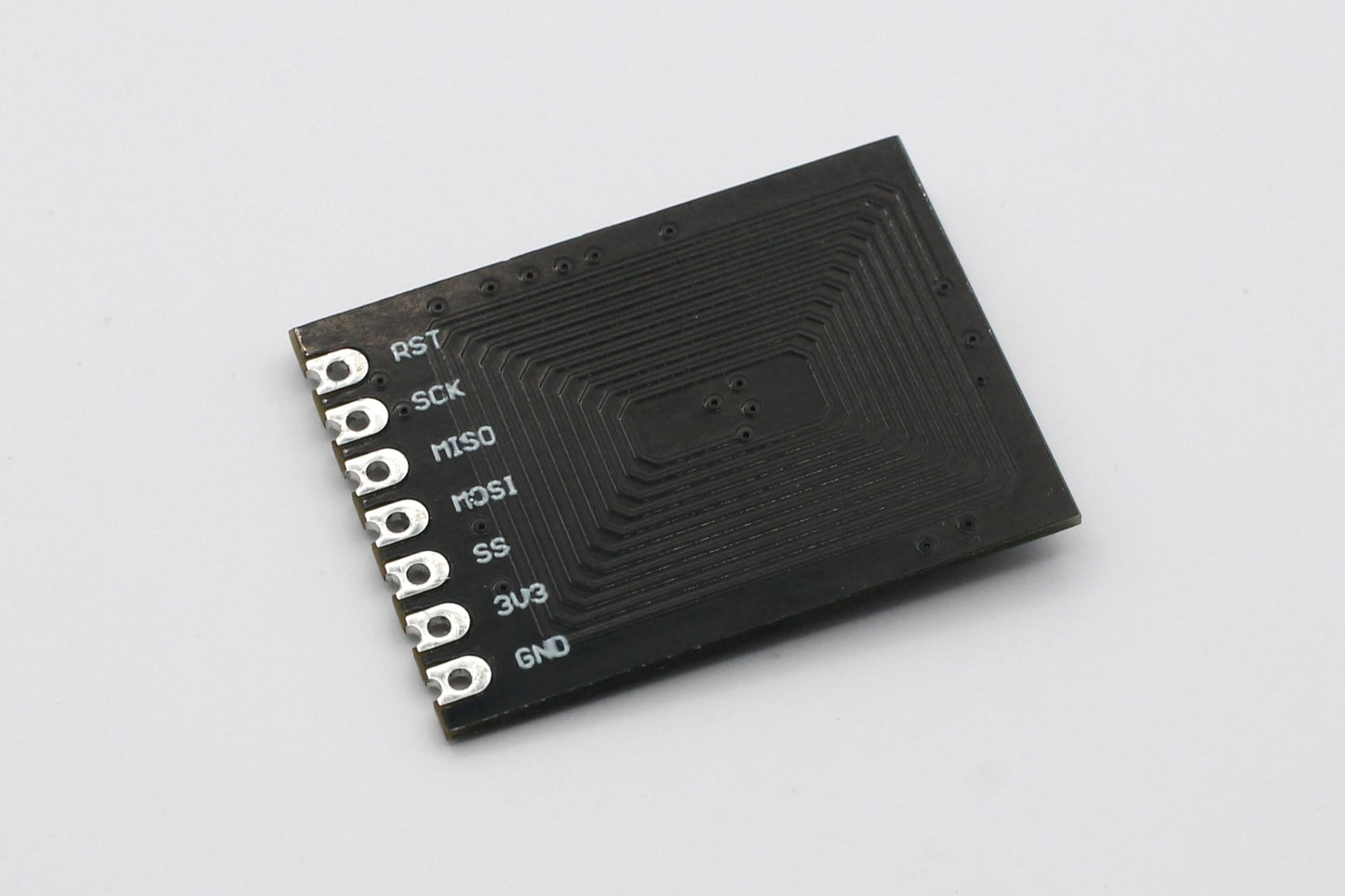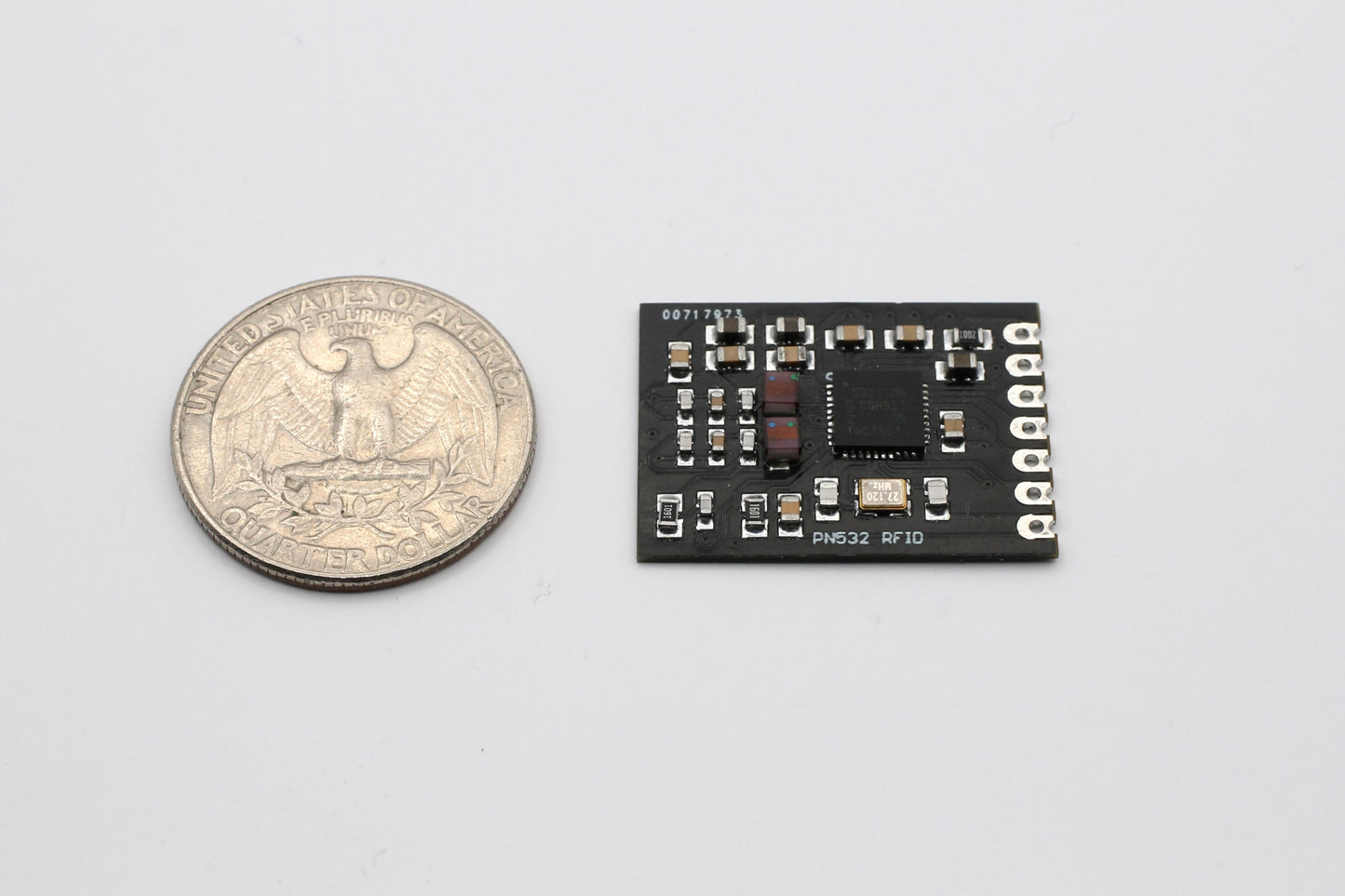Ultra-Compact NFC RFID PN532 Castellated Module
Ultra-Compact NFC RFID PN532 Castellated Module
Couldn't load pickup availability
What is it?
Introducing an extremely tiny NFC RFID Reader PN532 Castellated Module.
This NEW version features a compact 4-layer PCB and hybrid castellated pin headers, allowing you to either solder it directly to your custom PCB design without bulky header pins or use standard 100 mil (2.54 mm) pitch headers for added flexibility.
I designed this because while I see many different RFID boards on market, they are all big and come with standard header pins, which are bulky and sticks up from the PCB, adding unnecessary height. With this castellated pads design, you can keep your board compact and thin, while adding RFID reading capabilities to your design.
This is one of the smallest PN532 reader boards on the market. Most NFC breakout boards on the market are not optimized for size like this one. This one measures only 27mm x 20mm!
Despite its ultra-compact size, this RFID reader has its antenna fine tuned and boasts a reading range of around 20mm.
The board has the following pinouts:
- GND
- VCC: 3.3V - 5V
- SS: SPI Slave Select
- MOSI: SPI Master Out Slave In
- MISO: SPI Master In Slave Out
- SCK: SPI Clock
- RST: Reset
To use it, connect the pins to the SPI interface of the MCU, along with 3.3V-5V power and ground. The RST pin can be used to pulled LOW in order to put the PN532 to standby mode.
You can use it with open source Arduino libraries such as: Elechouse PN532 Arduino Library
Here are some unique use cases for such a small RFID reader board:
Wearable Devices: Integrate the board into smart clothing or accessories, like wristbands or badges, where space and size are critical.
Compact IoT Devices: Add RFID functionality to tiny IoT sensors or modules used in smart home automation, where minimizing size is essential for aesthetic and functional purposes.
Portable Payment Systems: Embed the module in compact, handheld payment terminals or mobile wallets, where size and weight are key considerations for portability.
Access Control Systems: Design ultra-thin, discreet access control devices, such as slim card readers or door locks, where a bulky module would be impractical.
Drones and Robotics: Incorporate the RFID reader into small drones or robots for inventory management, tracking, or identification tasks, without compromising the device's aerodynamic or mechanical design.
Medical Devices: Use the board in compact medical equipment or wearable health monitors that require secure RFID-based patient identification or data logging.
Smart Jewelry: Integrate the RFID reader into small, elegant smart jewelry pieces that can interact with other NFC-enabled devices or serve as secure authentication tools.






